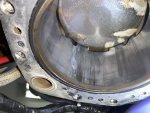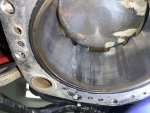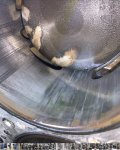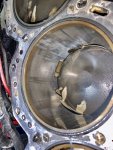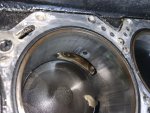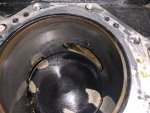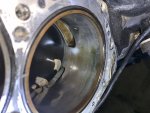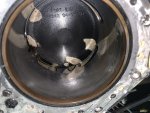Wondering how bad I’ve screwed up. Have a 1993 Evinrude 175 - got an intermittent beep alarm while idling away from ramp. Had never heard that before so turned engine off. Restarted multiple times with no alarm repeat so I proceeded on and boat responded normally and headed out, after short run engine appeared to go into SLOW mode, came off plane, ran rough at low rpms. Engine then died and would not restart. Started heading back on trolling motor for a while and tried motor again, started and idled rough allowing me to make it part way back but died again. Trolling motor again for an hour then big motor started again in SLOW , made it almost a mile before dying again. Made it back to ramp on trolling motor and headed home. Looked up alarm and appears it was VRO ‘no oil’. Also had some gas that appeared to be leaking around the VRO/fuel pump So I removed and then replaced with non-VRO pump, drained all gas and filled back up with premix. Started on the muffs and appeared normal. Back to lake today - started normal but was running a little rough and shaking as I idled from ramp. Very slow to get on plane but then evened out and appeared normal. Stopped at first spot, still a little rough at idle and low rpms but now noticed a slight ticking sound at idle that appeared to follow engine rpms. Next run boat got on plane normally and everything felt normal. When I came off plane I could still hear ticking noise. Only heard the VRO alarm the one time, never heard the ticking while in slow mode but now I am wondering if I have done damage based on the ticking noise. Any recommendations for do-it-yourself troubleshooting or ideas on the ticking?

- Shop
-
Main Menu Find The Right Fit
-
-
Slide Anchor Box Anchors Shop Now

-
Back Fishing
-
View All
- Fishing Rods
- Fishing Reels
- Fishing Rod & Reel Combos
- Fishing Tools & Tackle Boxes
- Fishing Line
- Fly Fishing
- Fishing Bait & Fishing Lures
- Fishing Rod Holders & Storage Racks
- Fish Finders, Sounders & Sonar
- Trolling Motors
- Fishing Nets
- Fishing Downriggers & Acessories
- Fishing Outriggers & Acessories
- Fishing Kayaks
- Fish Cleaning Tables
-
-
Minn Kota Riptide Terrova 80 Trolling Motor w/i-Pilot & Bluetooth Shop Trolling Motors

-
SportsStuff Great Big Marble Shop Tubes

-
Big Jon Honda 5hp Outboard Shop Outboards

-
Lexington High Back Reclining Helm Seat Shop Helm Seats

-
Kuuma Stow n Go BBQ Shop Now

-
Slide Anchor Box Anchors Shop Now

-
Back Electrical
-
View All
- Boat Wiring & Cable
- Marine Batteries & Accessories
- Marine DC Power Plugs & Sockets
- Marine Electrical Meters
- Boat Lights
- Marine Electrical Panels & Circuit Breakers
- Power Packs & Jump Starters
- Marine Solar Power Accessories
- Marine Electrical Terminals
- Marine Fuse Blocks & Terminal Blocks
- Marine Switches
- Shore Power & AC Distribution
-
-
ProMariner ProNautic Battery Charger Shop Marine Battery Chargers

-
Lowrance Hook2-4 GPS Bullet Skimmer Shop GPS Chartplotter and Fish Finder Combo

-
Boston Whaler, 1972-1993, Boat Gel Coat - Spectrum Color Find your boats Gel Coat Match

-
Rule 1500 GPH Automatic Bilge Pump Shop Bilge Pumps

-
Back Trailering
-
SeaSense Trailer Winch Shop Trailer Winches

-
Seadog Stainless Steel Cup Holder Shop Drink Holders

-
Slide Anchor Box Anchors Shop Now

-
- Boats for Sale
- Community
-







